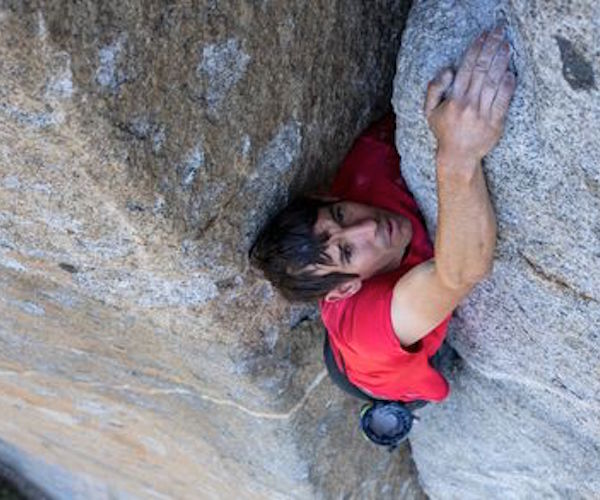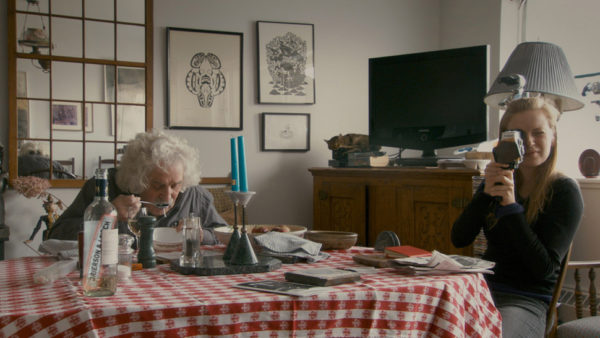Film Feature: STREAMING DOCS — Summer 2019
By Neil Giordano
What are the best new documentaries on digital platforms? Look no further.

A scene from “Edge of Democracy.”
The streaming landscape is filled with documentaries new and old this summer, with Netflix serving up a huge crop of its own streaming-only films . . . maybe too many (Netflix, if you’re listening, you need to come up with a release schedule that makes more sense.)
Also, we welcome back the riches of The Criterion Collection with its newly launched Criterion Channel streaming service, which is bigger and better than its previous incarnation — part of the now-defunct Film Struck.
This season’s Streaming Docs also features an array of documentaries about music and musicians. There is a summer soundtrack available for anyone’s taste: metal, punk, blues, Bob Dylan, and Afro-Cuban jazz.
Streaming-only and/or in limited theatrical release
From the cautionary tales file, there’s The Edge of Democracy (Netflix), a provocative documentary from Brazilian actress and filmmaker Petra Costa that looks closely at her homeland’s ongoing social maelstrom. The narrative moves from the impeachment (in 2016) of the nation’s first female president, leftist Dilma Rousseff, to her displacement by authoritarian Aecio Neves. The latter’s reign is reminiscent of the decades of fascist, oligarchical rule that marked Brazil’s earlier history. Also in focus: Rousseff’s Workers Party, which collapsed due to the collision between its anti-corruption laws and political alliances with moneyed interests. The Trumpian overtones of Neves and the moral confusion generated by campaign finance will be familiar to American audiences. Costa’s access to Rousseff and her predecessor, Lula da Silva, is unprecedented, while the director deepens the story with a melancholy voiceover that connects her personal and family story to the political breakdown.
For a polemical story closer to home, Knock Down the House (Netflix) takes on the 2018 midterms “revolution” through the stories of four insurgent Democratic candidates, notably New York’s left-wing superstar Alexandra Ocasio-Cortez. Besides its power-to-the-people slogans and rhetoric, which can become white noise like any political cant, the most striking aspect of the story is the non-professional nature of these candidates. True outsiders to the political system, they were called to battle against both the entrenched Democratic establishment in the primaries and the perception that a “red” district is fated to stay red. Also front and center is the quiet but earth-shaking power of grassroots organizing by Brand New Congress and Justice Democrats, two political action committees who recruited and supported the candidates. Does it portend that business-as-usual elections could become a thing of the past? We can only hope.
A break from politics (maybe), Ask Dr. Ruth (Hulu) provides a breezy portrait of the eponymous Dr. Ruth Westheimer, still alive and kicking in her 90s and still as frank and uninhibited about all things sexual. Aside from the fun in watching people squirm at talk of sex positions, the film lightly plumbs the revolutionary nature of her work in making human eroticism and female pleasure an open topic, beginning in the reactionary/puritanical Reagan era. Also of note is Westheimer’s personal history: she was the sole surviving member of her family to escape the Holocaust, served a short tenure as an Israeli sniper in the IDF, and over the years went through three husbands. The film could be seen as a companion piece to last year’s RBG (Hulu), which was about Ruth Bader Ginsberg. (Entries in the hagiographical genre of a “little woman who made herself big.”) It’s rare, but these two subjects truly deserve most of the accolades and adulation.
Recent gems and award winners

A scene from “Free Solo.” Photo: Alex Honnold.
Last year’s Oscar winner, Free Solo (Hulu), beat out a rich field of nominees. The film might not translate well to the small screen. (I originally saw it during its IMAX theatrical release.) Still, this is compelling filmmaking , not least for its odd, endearing protagonist, Alex Honnold. The protagonist’s ‘impossible’ quest is the holy grail of rock climbers worldwide — to solo free-climb (alone, without ropes) Yosemite’s El Capitan. The movie’s only flaw –– and it is a big one –– is its lack of context: to wit, it takes 3 or 4 days to climb El Capitan, with ropes. The film provides no glimpses of others on the cliff, except for a humorous shot of a pajama-clad climber waking up in the morning, hundreds of feet off the ground, watching in awe as Honnold whizzes past him (Honnold’s climb took less than 4 hours). The film’s additional charms include Honnold’s long-suffering girlfriend, who can’t completely understand his obsessions, and a history of other ill-fated climbers whose attempts ended in grisly deaths. Also riveting: the meta-narrative of the camera crew, led by co-director/climber Jimmy Chin, who worry that, by filming Honnold’s attempts, they’ve created an ethical minefield for themselves: what would it mean to them if Honnold falls to his death? Arts Fuse review
Elsewhere in America’s sporting life. John McEnroe: In the Realm of Perfection (Amazon, Kanopy) gives us a glimpse of the infamously temperamental tennis star at his peak during the ’80s at the French Open. I couldn’t stand McEnroe as a player or a personality (I preferred his stoic adversary, Ivan Lendl, an anti-McEnroe in just about every aspect), but the treatment here is nothing like your typical sports documentary. Director Julian Faraut leans on on close-up on-court archival film footage and he pushes aside athletic prowess and rhetorical clichés. With barely an extended rally or even a full-court long shot, the film proffers an incisive personal and psychological portrait of McEnroe as a young man obsessed. Aided by a Herzogian voiceover by French actor Matthieu Amalric, we see McEnroe’s moods shift in real time: impetuous, bratty, perfectionist, explosive. McEnroe’s performance (athletic and otherwise) make him memorable though far from sympathetic. Psychologically, he has more in common with Free Solo’s Honnold than you might notice at first glance.
For an emotional portrait of a wholly different kind of personality, turn to Marwencol (Criterion). It is the story of Mark Hogancamp who, after suffering brain damage from a violent bar brawl, creates his own distinctive course of recovery by building elaborate dioramas, fictional World War Two tableau set in a fictional Belgian town named Marwencol. In his pre-attack life, he battled alcoholism: but he showed enormous promise as a visual artist, and he slowly uses his talents to retrain himself to live again. Making action figures based on the people in his life, he fills out a wondrous fantasy realm that helps him reconnect with the real world around him. Last year’s Welcome to Marwen, starring Steve Carrell, tried to turn the story into a fictionalized feature film, but the documentary stands head and shoulders above the Hollywood treatment.

A scene from “Stories We Tell.”
I recently re-watched a personal favorite, Stories We Tell (Amazon, Hulu), a touching and beautifully made documentary from actor/director Sarah Polley. Alternating artful scenes filled with tragedy and joy, she reevaluates her parents’ marriage and ends up discovering secrets about her own paternity. Blending together grainy 16mm re-enactments (you might not know they’re re-enactments rather than home movies) with contemporaneous interviews, Polley is very much a part of her own film — even when she’s not on screen herself. The narrative’s various moving parts are brought together by her father’s scripted voice over — his own written testimony, crafted separately from the film but used to great effect. It was recorded on a soundstage with Sarah directing him: a meta-collaboration that reedits a family’s complicated story.
Documentary classics – music edition
Another Netflix release, Rolling Thunder Revue: A Bob Dylan Story by Martin Scorsese (Netflix) brings us Scorsese’s latest take on Dylan as American icon. The director assembles unused footage from the mid-’70s when the musician sparked a folk revival with his eponymous Rolling Thunder Revue tour. Rehearsals featured drug-addled hootenannies, backstage antics, and parties. Concert footage gives us the man himself in stylized white-face makeup, drawling out cryptic nuggets of Americana. Allan Ginsberg joined the tour, too, and his entries give the concerts — and the film — a fractured but poetic Beat flavor. What makes this film distinctive is that Scorsese blends fiction into the mix, conjuring up a meta-narrative involving Dylan’s many masks and identities over the years… and it’s not entirely successful. The German filmmaker who captured the original footage is played here by an actor, and a Sharon Stone cameo is just plain puzzling. For a more nuanced approach to Dylan’s life, nothing can top I’m Not There (available for rent on various platforms). Todd Haynes’s masterful biopic is equal part fever dream and life story — the approach shows us how fictional threads can lead to the (or a) truth. And, not to tread too hard on Scorsese, but for my money D.A. Pennebaker’s groundbreaking Don’t Look Back (Kanopy) trumps the director’s other effort, 2005’s No Direction Home (Amazon), which covers similar territory. Arts Fuse review

A scene from “The Decline of American Civilization.”
Director Penelope Spheeris might be best known to mainstream audiences for unleashing Wayne’s World and its now-famous “Bohemian Rhapsody” head-banging scene, but in the ’80s and ’90s her triptych The Decline of Western Civilization (Criterion) trained attention on some of the lesser known corners of American music. In the groundbreaking Part I (1981), she sets her camera on the nascent West Coast punk scene, which features the likes of X, Black Flag, and Circle Jerks. In Part II The Metal Years (1988) we glimpse the rising tide of the L.A. metal scene; the focus includes not only the day’s big acts, but also up-and-coming bands trying to find an audience amid an increasingly commercialized marketplace. Part III (1998) continues the focus on the underground and unknown, now documenting the teenage punk scene in Los Angeles, whose denizens embrace the counterculture ethos.
Continuing in this underground vein, some lost gems have reappeared in the streaming world that make fine companion pieces to Spheeris’ trilogy. Revenge of the Mekons (Kanopy) recounts the story of an unclassifiable British punk band who has somehow stayed together for 40 years. Cult-ish followers secretly celebrate the troupe’s rare club shows. The legendary amateur short Heavy Metal Parking Lot (Amazon, Fandor) will have you giggling in nostalgia for ’80s summertime concerts. The camera takes a long and careful look at Judas Priest fans in 1986 Maryland, complete with big hair, large American cars, and more devil’s horns than can be counted.
Finally, there’s another neglected music documentary, Louie Bluie (Criterion). Terry Zwigoff’s first film brings obscure roots music prodigy Howard “Louie Bluie” Armstrong into the spotlight. When he’s not picking a guitar, Armstrong proves to be an entertaining philosopher and comedian. His longtime collaborator Ted Bogan makes for an endearing straight man. Come for the blues, stay for the slice of Tennessee culture.
Neil Giordano teaches film and creative writing in Newton. His work as an editor, writer, and photographer has appeared in Harper’s, Newsday, Literal Mind, and other publications. Giordano previously was on the original editorial staff of DoubleTake magazine and taught at the Center for Documentary Studies at Duke University.
